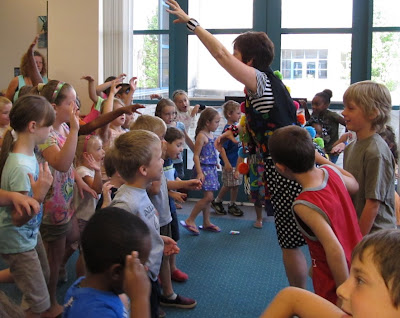Take it away Connie, we're ready for number five!!
5th Benefit: Emotional Growth
Also From NDEO:
Dance promotes psychological health and maturity. Children enjoy the opportunity to express their emotions and become aware of themselves and others through creative movement. A pre-school child enters a dance class or classroom with a history of emotional experiences. Movement within a class offers a structured outlet for physical release while gaining awareness and appreciation of oneself and others. Dance fosters social encounter, interaction, and cooperation.
6th Benefit: Creativity
Could nurturing the creative side of our children be a key to the future success of the United States? There is no question that education in the U.S. is in need of some serious revamping. As stated in the 2007 report of a comprehensive study of the American workforce, “Whereas for most of the 20th century the U.S. could take pride in having the best-educated workforce in the world, that is no longer true.” In proposing solutions, the authors of the study point to the development of creative thinkers as one of the keys to success: “Seeing new patterns and possibilities is the essence of creativity . . and creativity, innovation, and flexibility will not be the special province of an elite.
It will be demanded of virtually everyone who is making a decent living, from graphic artists to assembly line workers, from insurance brokers to home builders.”
The creative arts, by definition, nurture this aspect of the developing child. Movement specifically allows students to approach tasks “through the body, or kinesthetically,” and come up with new answers.
7th Benefit The Whole Child
Dance, as an art form and physical activity, is part of the education of the whole child. The Association for Supervision and Curriculum Development
believes a comprehensive approach to learning recognizes that successful young people are knowledgeable, emotionally and physically healthy, motivated, civically inspired, engaged in the arts, prepared for work and economic self-sufficiency, and ready for the world beyond their own borders.
ASCD calls on parents, educators, policymakers, and communities to join forces to ensure our children become productive, engaged citizens. Our children deserve an education that emphasizes academic rigor as well as the essential 21st century skills of critical thinking and creativity.
Take us home, Connie!! Wrap it up for us!!! Go Connie, Go Connie!!
Developmentally appropriate practice dictates that we educate the whole child. Furthermore, academics and physical activity are not mutually exclusive. A number of researchers have found that regular physical activity contributes to improved school performance. As neurophysiologist Carla Hannaford states in her book Smart Moves: Why Learning Is Not All In Your Head: “because movement activates the neural wiring throughout the body, the whole body, and not just the brain, is an instrument of learning.
I hope this blog entry has provided lots of food for thought, and reinforced your instincts to bring the delightful arts of creative movement and music to your learning environment!
Keep on dancin’,
Connie










What can I say?
ReplyDeleteI want to be in your class!
Lucky children
You're welcome, any time!!
ReplyDeleteSend your kids too!!
I absolutely LUV what I get to do -- interacting with the children/students/parents/teachers in attendance is the very best part!!